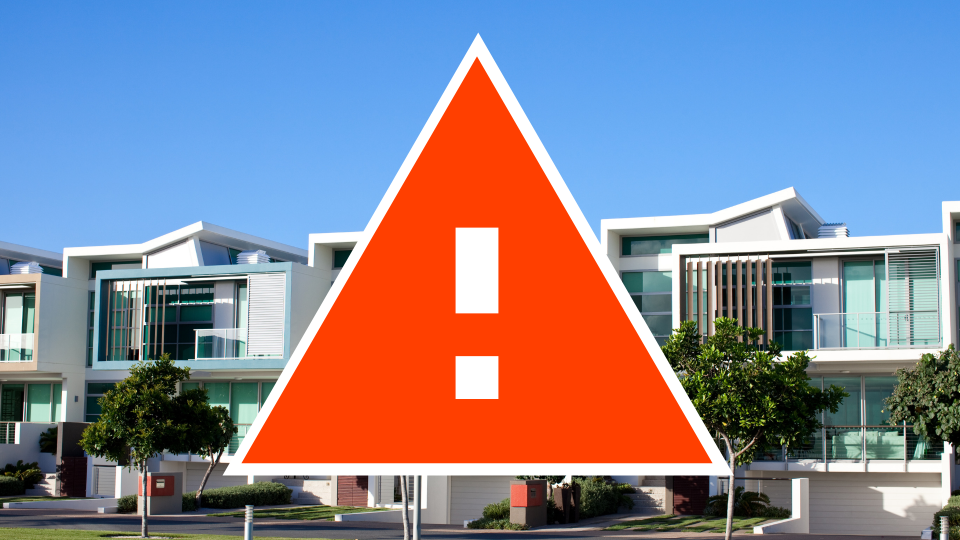The 5 property ‘red flags’ you NEED to know

Last year was considered the worst year for the property market since the 2008 GFC, and with 2019 unlikely to deliver any significant improvements, buyers need to have their wits about them.
That means paying attention to five crucial property indicators, RiskWise Property Research CEO Doron Peleg said today.
“The risk of price reductions are likely to remain very high at least until the second half of 2020. This adds uncertainty and impacts buyer sentiment,” he said.
“In addition, auction clearance rates have dropped below 50 per cent in both Sydney and Melbourne.”
He said these factors, coupled with uncertainty around changes to negative gearing benefits mean it’s “more important than ever” to be able to spot property red flags.
Go on then, what are the red flags?
According to Peleg, there are five key warning signs that a property might not be a good investment.
These are:
Oversupply
High unit-to-house ratios
High vacancy rates
Poor economic growth
Units that aren’t suitable for families
Why are these warning signs?
Suburbs with a large pipeline of building approvals were likely to underperform the market.
“There is a high possibility the value of an off-the-plan property may decrease between the original contract date and settlement. This will result in capital loss, as the equity in the home could be reduced,” he said.
“Also, the greater the ratio between units to houses, the greater the preference is for houses over units, and therefore, the risk associated with units in higher.
And areas which have had poor economic growth will also struggle. Peleg pointed to the South Australian economy, which while improving, continues to grapple with low population growth and soft housing demand. He argued changes to negative gearing and capital gains tax, as proposed by Labor, will hit these economies hardest.
However, KPMG Economics yesterday argued the proposed reforms would have a minimal impact provided the implementation was carefully managed.
Family-friendly dwellings with three bedrooms, parking and close to schools and transport hubs will tend to do better, Peleg continued.
“Generally, it is understood there is a preference for houses over units to deliver solid capital growth,” he added.
“However, the risk associated with a unit or other property type depends on the specific suburb, which is why they should be assessed on a case-by-case basis.”
Make your money work with Yahoo Finance’s daily newsletter. Sign up here and stay on top of the latest money, news and tech news.
Now read: This is how much Aussie housing markets will fall in 2019
Now read: Labor’s proposed negative gearing reforms given green light by major consulting firm
Now read: Sydney no longer the most expensive city to rent in Australia

 Yahoo Finance
Yahoo Finance 
